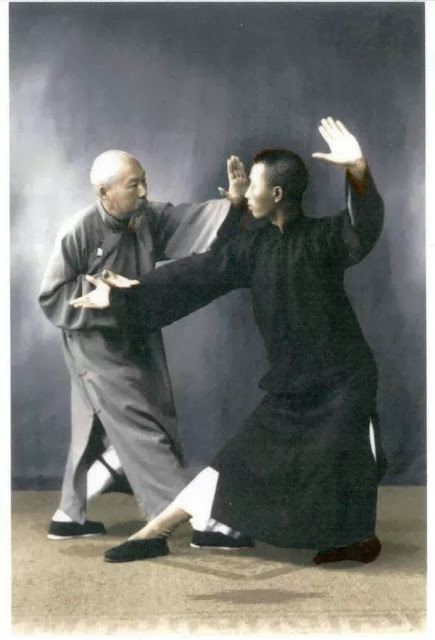Berserker and Sage- The Yang and Yin personalities in the martial arts
Yang and Yin feature in the tactical as well as the psychological aspect of the martial arts. At least for the Chinese martial arts, as I have no idea what is being taught in other systems...
For the purpose of this post Yin refers to a calm, yielding disposition, whereas Yang refers to an aggressive, proactive nature.
In history two types of warrior have each exhibited the characteristics of Yang and Yin. I'll refer to them as the Berserker and the Sage.
The Berserker
In ancient times the Berserker was a zealot warrior who worked himself up into a state of fearless aggression. For this purpose they were known to wear bear skins, sharpen their teeth and growled like animals.
A typical berserker ritual that we see to this day is the All Blacks' Haka which is known to all rugby fans.
Whatever the technique or ritual used- the berserker state is a result of Yang energy being raised and the objective of destroying the enemy takes priority over all else- even personal safety. We witness a manifestation of the berserker state where a karateka kiais loudly when he breaks a board or tile.
In order to learn how to raise Yang energy you are welcome to mail me.
The berserker state transforms a person into a ruthless fighting machine. Mastering it helps to dispel fear in times of danger to enable one to act.
The Sage
I use this term to refer to fighters like Aikido and Taijiquan exponents who use a calm and yielding approach to avoid attacks and to subdue an attacker.
This state is achieved by lowering qi to the abdomen. The calm state encourages the devising of tactics. Movement in a one-on-one situation is more reactive than proactive. Further- effort spent is entirely proportional to the attack being faced at a given moment.
Lastly- The Master
One only has to see an overly aggressive opponent being subdued by a yielding fighter who uses that opponent's attack against him- or an overly passive opponent being overcome by a fighter who actually steps in to act- to know that a balance between the two is essential. If this balance was easily attainable it would not be considered the level of mastery.
By learning both approaches, identifying one's position on the balancing scales and applying the appropriate technique to rectify imbalances one can attain mastery over himself and any situation.







Comments
Post a Comment